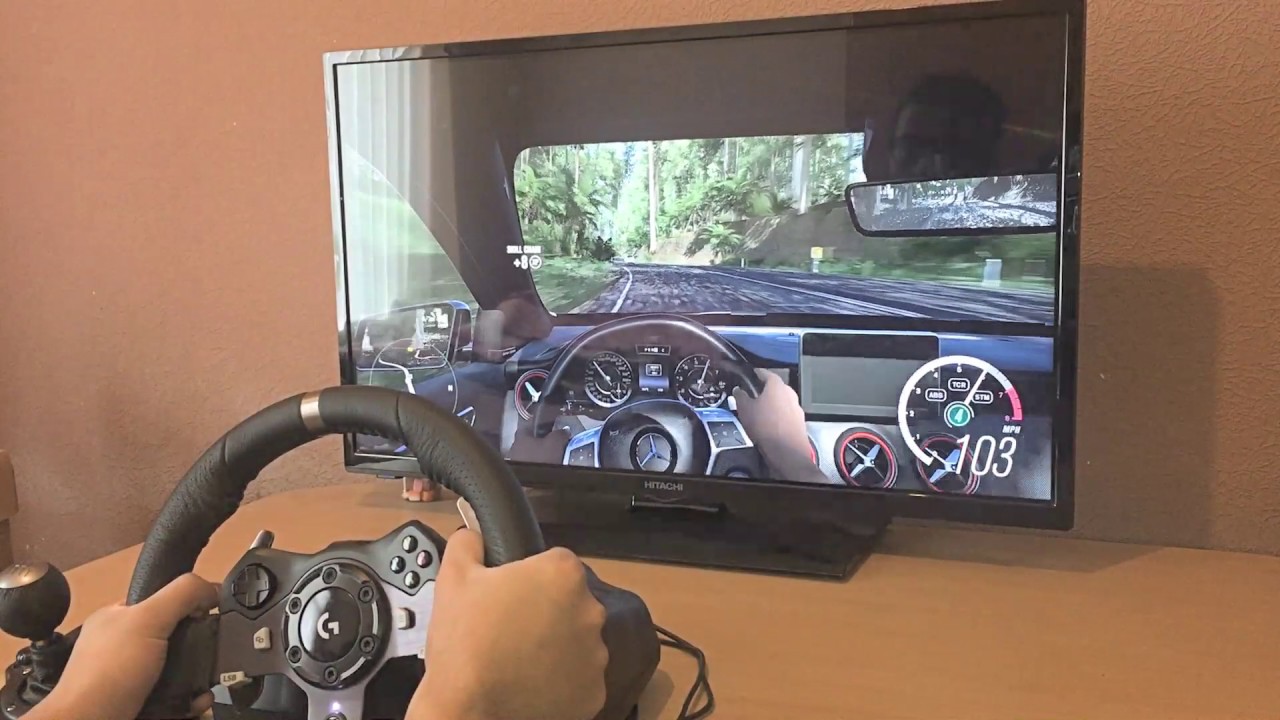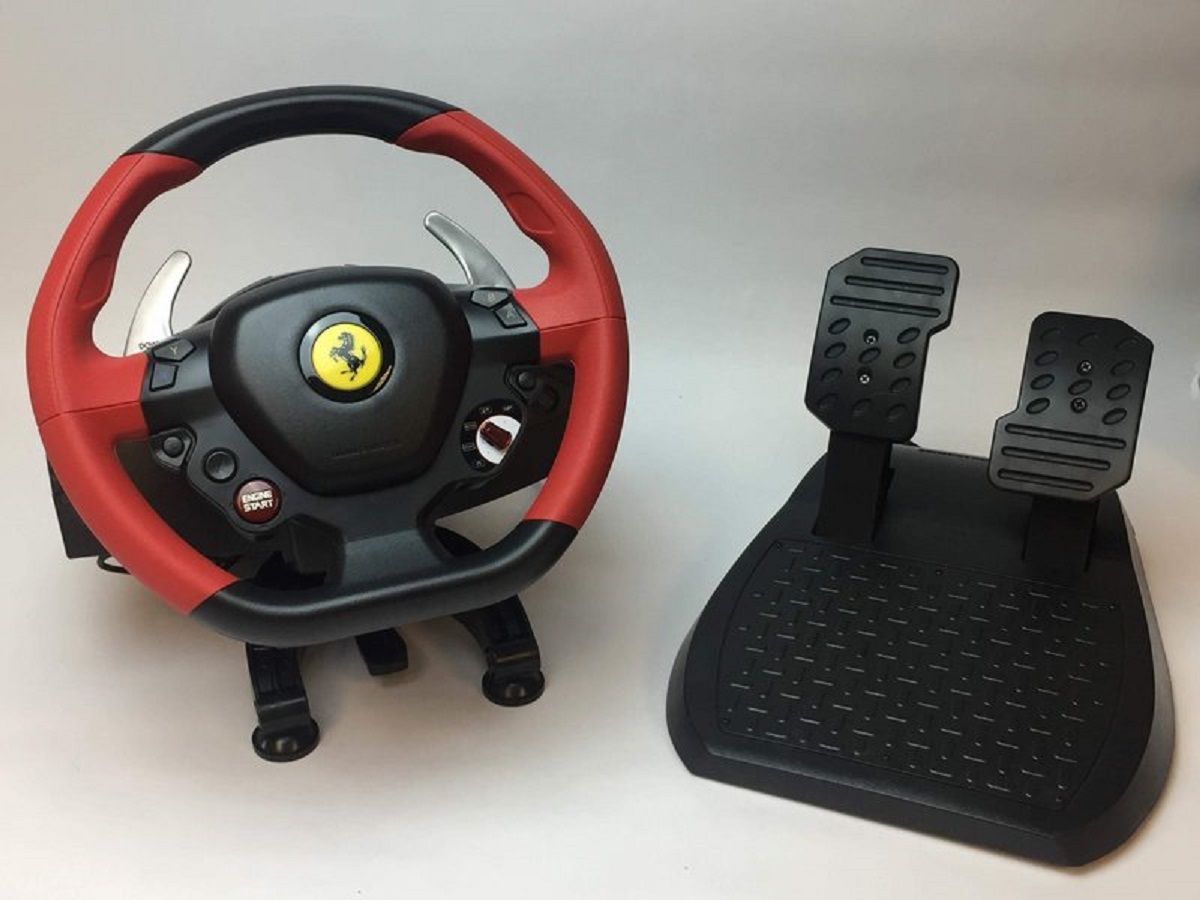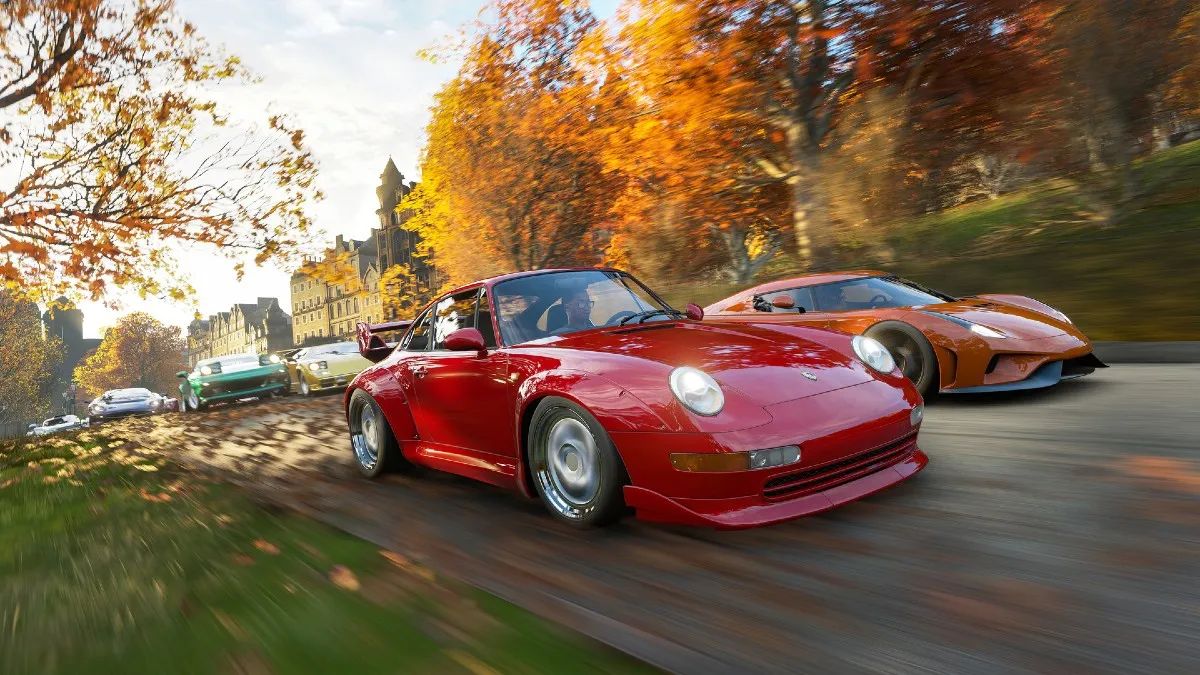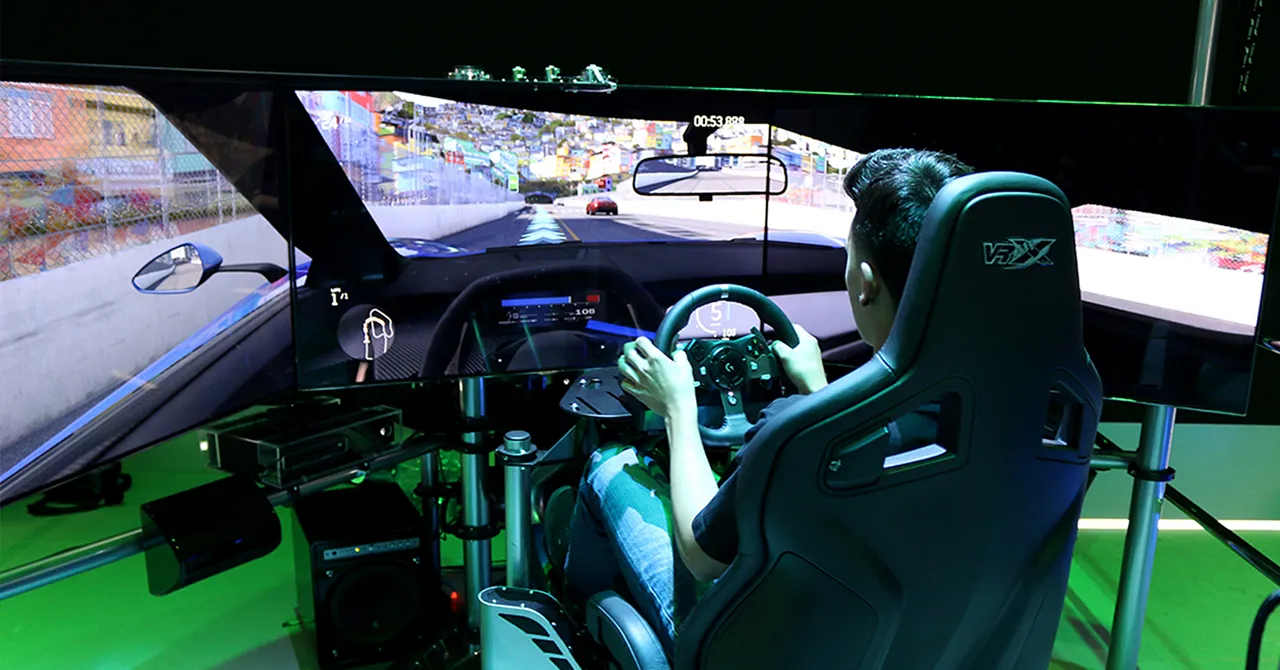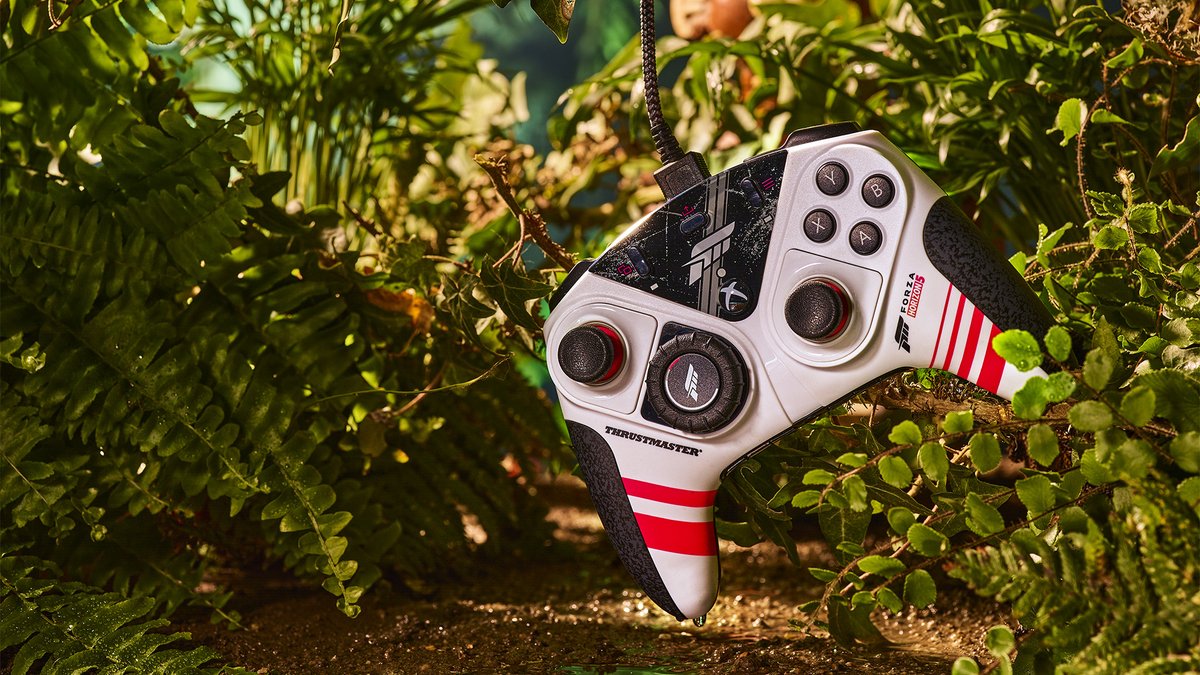Introduction
Are you ready to take your Forza Horizon 3 gaming experience to the next level? Setting up a racing wheel can add a whole new dimension of realism and excitement to your gameplay. Whether you're a casual gamer or a dedicated racing enthusiast, the tactile feedback and precision control of a racing wheel can make you feel like you're truly behind the wheel of a high-performance vehicle, navigating the stunning landscapes of the Australian outback.
In this guide, we'll walk you through the process of setting up a racing wheel for Forza Horizon 3, from choosing the right wheel for your needs to fine-tuning the settings for the best possible experience. With the right equipment and configuration, you'll be able to immerse yourself in the world of Forza Horizon 3 like never before, feeling every twist and turn as if you were really there.
So, if you're ready to elevate your gaming experience and unleash the full potential of Forza Horizon 3, let's dive into the exciting world of racing wheel setup and customization. Get ready to feel the thrill of the open road and the exhilaration of high-speed racing, all from the comfort of your own gaming setup. Let's get started!
Choosing the Right Racing Wheel
When it comes to selecting the perfect racing wheel for Forza Horizon 3, there are several factors to consider to ensure an immersive and enjoyable gaming experience. The market offers a wide array of racing wheels with varying features, compatibility, and price points, so it’s essential to make an informed decision based on your preferences and gaming setup.
Compatibility: Before making a purchase, it’s crucial to verify that the racing wheel is compatible with your gaming platform. For Forza Horizon 3 on PC, ensure that the wheel supports Windows and is compatible with the game. For Xbox One, look for wheels specifically designed for this console to guarantee seamless integration.
Force Feedback: The force feedback mechanism is a key feature that simulates the tactile sensations experienced when driving a real vehicle. Look for a racing wheel with robust force feedback capabilities, as it will provide realistic resistance and response, enhancing the overall immersion in Forza Horizon 3’s dynamic driving environments.
Pedals and Shifters: Consider whether you prefer a racing wheel with a separate pedal set and gear shifter or an all-in-one integrated design. High-quality pedals with realistic resistance and a responsive shifter can significantly elevate the authenticity of your racing experience, allowing for precise control over acceleration, braking, and shifting.
Build Quality and Ergonomics: A racing wheel’s construction and ergonomic design play a vital role in long-term comfort and durability. Look for a wheel that feels solid and comfortable in your hands, with intuitive button placement for easy access to in-game functions without compromising your driving experience.
Budget and Features: Determine your budget and prioritize features that align with your gaming preferences. While advanced features such as customizable force feedback, programmable buttons, and interchangeable components offer enhanced customization, entry-level options can still provide a satisfying racing experience without breaking the bank.
By carefully evaluating these factors, you can make an informed decision when choosing a racing wheel that complements your gaming style and delivers an unparalleled level of immersion in Forza Horizon 3. Now that you have a clearer understanding of what to look for in a racing wheel, let’s move on to the next step: installing the chosen racing wheel for your gaming setup.
Installing the Racing Wheel
Once you’ve selected the ideal racing wheel for Forza Horizon 3, the next step is to ensure a seamless and secure installation process. Proper installation not only guarantees stable functionality but also enhances the overall safety and performance of the racing wheel during intense gaming sessions. Here’s a step-by-step guide to installing your racing wheel:
- Unboxing and Inspection: Carefully unbox the racing wheel and its components, ensuring that all parts are accounted for and undamaged. Verify the presence of the wheel base, pedals, shifter (if applicable), power supply, and any accompanying cables or accessories.
- Positioning and Stability: Identify an optimal location for your racing wheel setup. Ideally, choose a stable surface such as a desk or dedicated racing wheel stand to prevent unwanted movement or slippage during gameplay. Ensure that the wheel, pedals, and shifter, if separate, are positioned ergonomically for comfortable access.
- Connecting the Wheel: Depending on the model, connect the racing wheel to your gaming platform using the provided USB cable or wireless adapter. Ensure that the connection is secure and that the wheel is recognized by your PC or Xbox One console. Follow the manufacturer’s instructions for any specific setup requirements.
- Mounting the Wheel: If your racing wheel includes mounting clamps or suction cups, securely attach the wheel to the chosen surface, ensuring that it is firmly in place. Adjustable clamps allow for customization based on the thickness of the mounting surface, providing a snug and stable fit for the wheel base.
- Setting Up the Pedals: Position the pedal set at a comfortable distance from the racing wheel, allowing for natural foot placement and easy access to the accelerator, brake, and clutch (if applicable). Some pedal sets feature customizable pedal faces and resistance, so adjust them to suit your preferences.
- Calibration and Testing: Once the physical setup is complete, follow the calibration instructions provided by the manufacturer to ensure that the racing wheel and pedals are accurately recognized by your gaming platform. Test the functionality of the wheel, pedals, and shifter to confirm that all components are responsive and properly configured.
By following these installation steps with precision and care, you can set up your racing wheel for Forza Horizon 3 in a manner that maximizes both performance and comfort, setting the stage for an immersive and thrilling gaming experience. With the racing wheel securely installed and calibrated, you’re now ready to delve into the exciting world of Forza Horizon 3 and fine-tune the wheel’s settings for optimal gameplay.
Configuring the Racing Wheel Settings in Forza Horizon 3
After successfully installing your racing wheel, the next crucial step is to configure the in-game settings to ensure seamless integration and optimal performance within Forza Horizon 3. Customizing the racing wheel settings allows you to fine-tune the gameplay experience, tailoring it to your preferences and maximizing the immersive feel of navigating the diverse landscapes and challenging tracks of the game.
Accessing the Settings: Launch Forza Horizon 3 and navigate to the settings menu. Look for the “Controller” or “Input” section, where you can access the configuration options for your racing wheel. Here, you’ll find a range of settings that can be adjusted to enhance the responsiveness and realism of the wheel’s input.
Wheel Calibration: Before delving into specific settings, it’s essential to calibrate the racing wheel within the game. This process ensures that the game accurately recognizes the wheel’s range of motion and input sensitivity. Follow the on-screen instructions to calibrate the wheel, allowing for precise steering and control throughout your gameplay sessions.
Force Feedback Strength: Forza Horizon 3 offers various force feedback settings that allow you to adjust the strength and responsiveness of the racing wheel’s feedback. Experiment with these settings to find a balance that provides realistic resistance while ensuring that the feedback enhances, rather than detracts from, your gaming experience.
Steering Sensitivity: Fine-tuning the steering sensitivity can significantly impact the responsiveness of the racing wheel. Adjust this setting to achieve the level of precision and control that suits your driving style, whether you prefer a more forgiving steering input or a highly responsive, twitchy feel.
Pedal Configuration: If your racing wheel includes a pedal set, take advantage of Forza Horizon 3’s pedal configuration options. Customize the sensitivity and dead zones of the accelerator, brake, and clutch pedals to match your preferred driving techniques, allowing for smooth and intuitive control over your vehicle’s speed and handling.
Button Mapping: Utilize the game’s button mapping feature to assign specific in-game functions, such as shifting gears, activating the handbrake, or navigating menus, to the buttons and paddles on your racing wheel. This customization ensures that essential controls are easily accessible without interrupting your driving experience.
By carefully configuring these settings to align with your preferences and playstyle, you can harness the full potential of your racing wheel within Forza Horizon 3, immersing yourself in the exhilarating world of high-speed racing with unparalleled realism and control. With the racing wheel settings optimized, you’re now poised to fine-tune the wheel’s physical attributes for the best possible gaming experience.
Fine-tuning the Racing Wheel for the Best Experience
Now that you’ve configured the in-game settings for your racing wheel in Forza Horizon 3, it’s time to focus on fine-tuning the physical attributes of the wheel to ensure the best possible gaming experience. By adjusting the wheel’s setup and ergonomics, you can further enhance comfort, responsiveness, and immersion, allowing for extended gaming sessions with precise control and minimal fatigue.
Wheel Rotation Angle: Many racing wheels offer adjustable rotation angles, allowing you to customize the degree of steering input required for full left and right turns. Experiment with different rotation settings to find a balance that suits your preferences, whether it’s a wider angle for realistic, sweeping turns or a narrower angle for more arcade-style responsiveness.
Force Feedback Tweaks: While you’ve configured force feedback settings in the game, some racing wheels provide additional software or firmware options for fine-tuning force feedback at the hardware level. Explore these settings to further refine the wheel’s tactile response, ensuring that bumps, road texture, and vehicle dynamics are conveyed with precision and realism.
Wheel Height and Angle: Adjust the mounting position and angle of the racing wheel to optimize comfort and ergonomics. The wheel should be positioned at a height and angle that allows for a natural grip and minimal strain on your wrists and arms, promoting long-term comfort and control during intense racing sessions.
Pedal Calibration: If your racing wheel includes a pedal set, take advantage of any additional calibration options provided by the manufacturer. Fine-tune the pedal sensitivity and resistance to match your preferred driving style, ensuring that the pedals respond accurately to varying degrees of input for smooth acceleration, braking, and clutch control.
Shifter Customization: For racing wheels equipped with a manual gear shifter, explore any available customization options for the shifter’s resistance, throw distance, and sequential or H-pattern modes. Tailoring the shifter’s feel to your preferences can elevate the immersion of manual gear changes, adding a layer of authenticity to your driving experience.
By meticulously fine-tuning these physical aspects of your racing wheel setup, you can optimize comfort, responsiveness, and realism, paving the way for an unparalleled gaming experience in Forza Horizon 3. With the wheel’s physical attributes aligned with your preferences, you’re now fully prepared to immerse yourself in the breathtaking landscapes and heart-pounding races of Forza Horizon 3, feeling every twist and turn as if you were truly behind the wheel of a high-performance vehicle.







